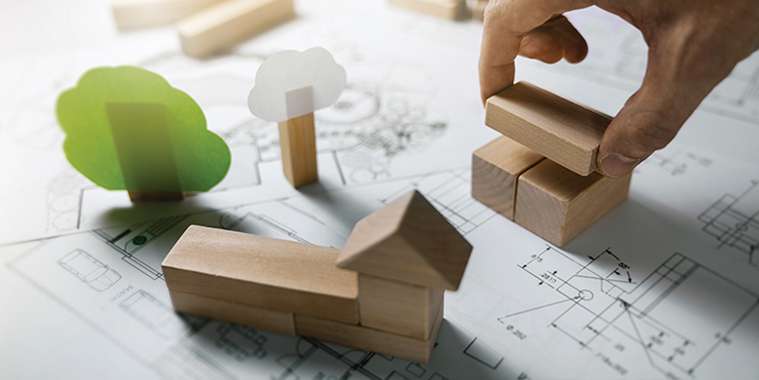Would you like to lower your impact on the environment? Consider buying a Leadership in Energy and Environmental Design (LEED®) certified home. With World Environment Day occuring on June 5, there’s no better time to talk about LEED® homes.
Designed and built to use less energy and water while providing cleaner indoor air, LEED® homes are not only constructed with high-quality, sustainable materials, they can also reduce your utility bills and help you access rebates from green homes programs. Here’s what you need to know.
What is LEED® certification?
LEED® is an international third-party certification program for commercial and residential buildings overseen by the Canada Green Building Council to promote sustainable building practices. Originally created for commercial programs, LEED® for Homes Canada launched in 2009 and has grown in popularity in recent years as home buyers become more committed to reducing their environmental impact.
LEED® certified homes are assessed and rated to make sure they meet specific standards in various categories, resulting in a more energy-efficient, and sustainable home. Builders must meet multiple prerequisites to obtain the minimum number of credits to achieve “Certified” certification. Advanced levels include Silver, Gold and Platinum — the highest certification.
“With a LEED® certified home, you’re getting a substantially better home than average; it varies depending on the checklist and points a builder chases, but all LEED® homes have improved energy efficiency, improved indoor air quality and meet minimum requirements for ventilation and radon protection,” says Tyler Hermanson, director of innovation at 4 Elements Integrated Design in Calgary, which tests and verifies hundreds of LEED® homes each year.
Why choose a LEED® certified home?
“LEED® certification shows the building has gone above and beyond standard construction methods to achieve a higher rating in energy and environmental design,” says Vancouver-based Andriana Beauchemin, senior environment, social and governance (ESG) project manager and LEED® accredited professional for EcoAmmo Sustainable Consulting, which is headquartered in Edmonton.
LEED® homes typically consume between 30% and 70% less energy and use half the amount of water as non-green homes.
“Energy efficiency is important to buyers. A building code home must meet the minimum standards, but a LEED® home will typically be energy modelled and tested, so you’ll know the energy efficiency of the house,” explains Hermanson. “Indoor air quality is also important for buyers, as they want to make sure their family’s safe and the air they breathe is fresh, filtered, and properly distributed through the house, which isn’t a code requirement.”
How is a LEED® home’s impact on the environment lower than a standard-built house?
Beauchemin notes there are multiple categories within the LEED® rating system including whether your landscape requires less water and pesticides and whether the home’s in a walkable community.
“There’s a water efficiency category, an energy and atmosphere category, and also a materials and resources category that examines the finishings and fixtures throughout your house — like flooring, paint, or cabinetry — that can achieve various environmental certifications or even just having recycled content,” she explains.
Is a LEED® home more expensive?
“Price can vary a lot because the specifications between a LEED® certified home and a LEED® Platinum one can be so different,” says Hermanson. “We’re able to do a LEED® certified level home for minimal cost, especially with builders already building a high-quality product. It’s maybe five percent more for some of the LEED® pieces, than a code-minimum house.”
However, a LEED® Platinum home can be 20, 30, or 40% more expensive because it has substantially more features than a LEED® certified home, he adds.
“Some certification points are more expensive to target than others: If you want to add a solar array, you’ll have that cost of solar, but if you want to put in less grass and more native planting, there might not be a difference in your cost,” notes Beauchemin. “You can pick and choose based on your budget and what works for the project goals you want to target.”
Can you renovate your home to become LEED® certified?
You can’t just apply a coat of VOC-free paint for LEED® certification; you’d probably have to gut the entire home because all elements of the house — from insulation to the roof — must be brought up to LEED® standards, notes Hermanson.
“Our own house is LEED® registered; we’ve been working on it since 2013, and we’re still not finished with the reno to bring it up to LEED® standards,” he says. “It’s a process, especially if you don’t do the reno all in one shot. We renovated our basement to LEED® standards, and then we did the exterior and the windows this year. Nationally, we haven’t seen a lot of LEED® renovations because few people are buying a house to renovate down to the studs and back up again.”
Can you get grants to make your home LEED® certified?
The federal government offers several incentives towards LEED® certification, including the Canada Greener Homes Grant, which gives you up to $5,000 to help you make your home more energy efficient and the Canada Greener Homes Loan — an interest-free loan of up to $40,000.
“There are also Clean Energy Improvement programs that are available municipally and provincially that homeowners can access to make their homes more energy efficient and contribute to a LEED® certification,” adds Hermanson, noting that solar panels, insulation, and new windows are some of the eligible expenses.
Depending on where you live and which builders you work with, you may also be able to access tax breaks, home insurance rebates and preferred mortgage rates if you buy a LEED® certified home.
Where to find a LEED® professional?
Beauchemin suggests engaging a builder that has experience with the LEED® program.
“If your builder has certified several homes under the LEED® program, it’s probably going to be quite a simple process,” she says. “Or you can reach out to a company like ours and just optimize your checklist to help guide you and your building team to meet the certification targets for your budget and desired design.”
To find LEED® home builders and consultants in your province, check out the Canada Green Building Council’s website at cagbc.org which has a list of providers. Or reach out to a professional REALTOR® who specializes in new home construction.
— Realtor.ca



